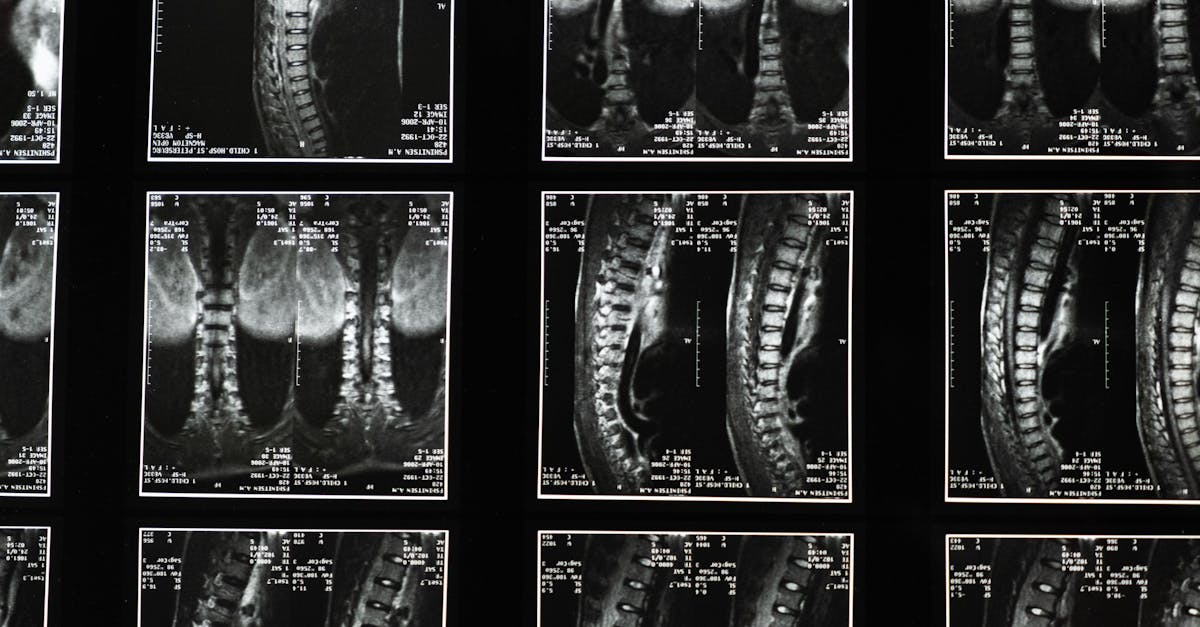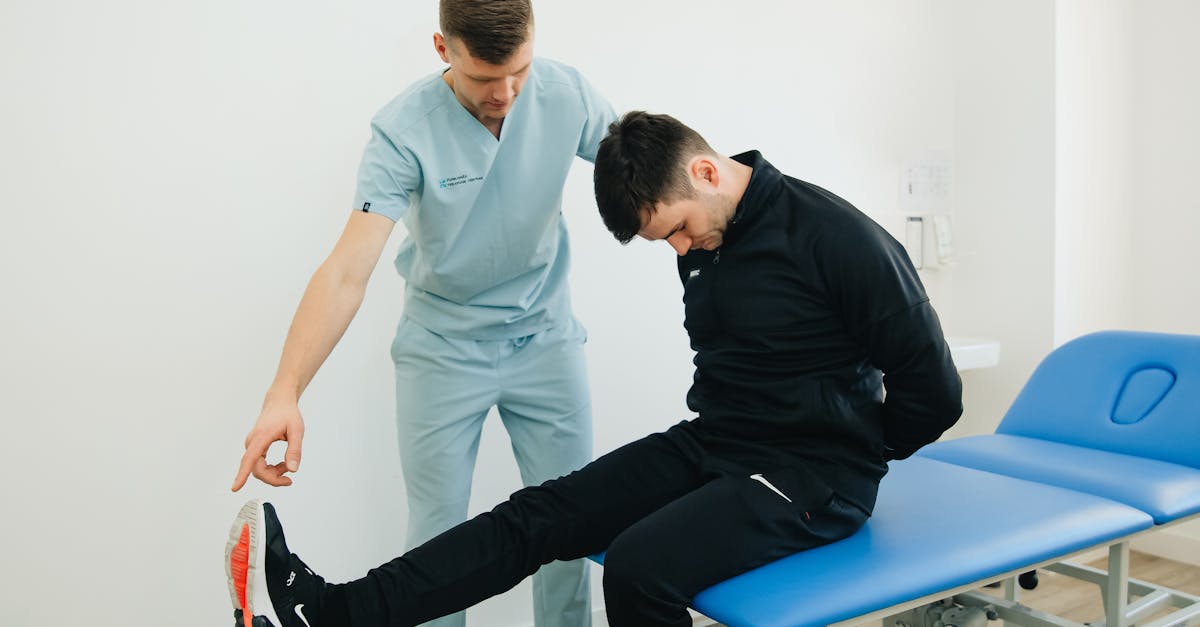In Short, sciatica refers to pain originating from the sciatic nerve, which can occur due to inflammation or compression of the nerve. This condition leads to shooting pain, numbness, and weakness that may affect one or both legs. Understanding sciatica can be beneficial for finding the right treatments and relief. Effective management options include physical therapy, anti-inflammatory medications, and surgical interventions when necessary. Addressing nerve inflammation can enhance mobility and overall quality of life. |
Understanding Inflammation of the Sciatic Nerve
Inflammation of the sciatic nerve, commonly known as sciatica, occurs when this nerve experiences irritation, compression, or inflammation. This condition can lead to symptoms such as shooting pain down one or both legs, often accompanied by numbness, weakness, or tingling. The primary causes include pressure from herniated discs, bulging discs, or tight muscles. It’s essential to recognize the signs of sciatica early, as effective management can prevent further complications and promote a return to normal activities.

Experience a New Path to Wellness with Pulse Align
Pulse Align offers a non-invasive, innovative approach to enhancing your body’s natural balance and posture through gentle, imperceptible pulses. By focusing on muscle tone symmetry and posture improvement, this method aims to relieve discomfort and tension, allowing you to reconnect with your best self.
Natural Recalibration for Enhanced Comfort
Unlike traditional methods that target specific discomforts, Pulse Align focuses on helping the body recalibrate itself naturally. This approach promotes overall well-being and often leads to greater comfort and posture, fostering a sense of physical harmony that resonates throughout daily activities.
Personalized Solutions for Every Client
At Pulse Align, every client’s experience is unique. Through a personalized approach, clients share testimonials of remarkable improvements in neck and back tension, postural balance, and overall sense of wellness. This emphasis on individualized care, suitable for the entire family—including children and pregnant women—makes Pulse Align an integral part of your health journey.
Join Us in Your Wellness Journey
We invite you to explore the services offered at Pulse Align by visiting our website to learn more and find nearby locations, including La Prairie, Mont-Royal, and Terrebonne. Book a consultation for yourself or your family to experience this safe, non-invasive, family-friendly approach to wellness. Remember, Pulse Align is here to complement your healthcare journey, supporting your body’s natural processes toward optimal functioning.
Medical Disclaimer
The information provided by Pulse Align complements, but does not replace, medical care. Clients should remain under the supervision of their healthcare team for any medical condition.
Understanding Inflammation of the Sciatic Nerve
- Definition: Inflammation of the sciatic nerve causes pain along its path.
- Common Symptoms: Shooting pain, weakness, numbness, and tingling in the legs.
- Main Causes: Herniated discs, tight muscles, or prolonged pressure on the nerve.
- Diagnosis: Performed through physical exams and imaging tests.
- Treatment Options: Anti-inflammatory medications, physical therapy, and exercise.
- Home Remedies: Ice and heat therapy can help alleviate pain.
- Prevention: Maintaining good posture and regular physical activity.
- When to Seek Help: If symptoms persist or worsen, consult a healthcare professional.
Understanding Sciatic Nerve Inflammation
Sciatica represents a common yet often misunderstood condition, characterized by discomfort radiating along the sciatic nerve, which extends from the lower back through the legs. Inflammation of the sciatic nerve can significantly impact daily life, causing pain, weakness, and numbness. Understanding the causes, symptoms, and possible treatments available is crucial for managing this condition effectively. In this article, we’ll explore the nature of sciatic nerve inflammation, its effects on the body, and methods to address the pain it creates.
What Causes Sciatic Nerve Inflammation?
The underlying causes of sciatic nerve inflammation can be varied. Most frequently, it arises from compression or pressure exerted on the nerve due to a herniated disc or a bone spur on the spine. However, other factors can contribute, including muscle tightness, degenerative disc disease, or even prolonged sitting, which may lead to tightness in the lumbar spine area. It is essential to identify these causes to initiate the appropriate treatment strategy.
Signs and Symptoms
Individuals suffering from sciatica often experience distinctive symptoms. The most common is the presence of shooting pain that travels from the lower back down one leg. This pain can be accompanied by other sensations, such as numbness or tingling, especially in the leg or foot. In more severe cases, weakness in the leg may also manifest, complicating day-to-day activities and mobility.
Treatment Options for Inflammation
Addressing sciatic nerve inflammation involves various treatment options aimed at alleviating pain and restoring functionality. For some, over-the-counter anti-inflammatories may be beneficial in reducing swelling. Physical therapy is often recommended, emphasizing activities to strengthen the core muscles and improve flexibility. This is instrumental in alleviating pressure on the sciatic nerve and ensuring long-term relief.
Holistic Approaches
Incorporating a holistic approach to managing sciatica can also yield positive results. Techniques such as yoga and mindfulness practices can enhance mind-body awareness, and promote relaxation, ultimately contributing to reduced inflammation in the body. Additionally, massage therapy can ease tight muscle tension, further relieving pressure on the sciatic nerve.
The Role of Lifestyle Changes
Adopting certain lifestyle changes can have a profound impact on reducing the frequency and intensity of sciatic pain. Maintaining an active lifestyle through regular exercise can help fortify the back and leg muscles, providing support to the spine. Moreover, focusing on ergonomic adjustments to workstations can prevent pressure buildup in areas that commonly contribute to nerve compression.
When to Seek Professional Help
While many cases of sciatica resolve with time and self-care measures, there are instances when professional medical intervention becomes necessary. If the pain is persistent, or worsens, or is accompanied by complications such as bladder or bowel dysfunction, it is vital to seek guidance from a healthcare professional. Early diagnosis and targeted treatment can play a crucial role in the management and recovery process.
By understanding the implications of sciatic nerve inflammation, individuals can take proactive steps in their journeys towards recovery. Embracing an individualized, holistic approach will not only assist in alleviating pain but also promote sustainable muscular health and resilience in the body. Aligning with principles from organizations that prioritize accessible health solutions further reinforces the importance of adapting one’s lifestyle, along with fostering a supportive community for those affected by sciatic nerve complications.
| Aspect | Wellness Focus |
| Symptoms | Awareness of discomfort and sensitivity can lead to gentle adjustments in lifestyle. |
| Causes | Understanding triggers helps in developing personalized wellness strategies. |
| Movement | Incorporating gentle exercises promotes balance and reduces tension. |
| Inflammation | Maintaining a calm state can support the body’s natural healing. |
| Nerve Health | Nurturing nerve health through mindful practices nurtures overall well-being. |
| Stretching | Regular stretching enhances flexibility and relieves strain. |
| Diet | Incorporating an anti-inflammatory diet can support overall wellness. |
| Rest | Prioritizing restorative rest fosters recuperation and balance. |
| Stress Management | Engaging in relaxation techniques can mitigate stress and promote comfort. |
| Community Support | Seeking support from others fosters connection and shared healing journeys. |
Empowering Wellness Journeys through Holistic Recovery
Clients who have sought relief from sciatica at Pulse Align share remarkable stories of healing and restoration. Many have emphasized how our unique holistic approach fosters the body’s natural ability to recalibrate and restore balance, thus alleviating discomfort and enhancing overall well-being.
For instance, residents of La Prairie have reported significant improvements in their daily lives after attending sessions that combine manual therapy with targeted exercises. Clients in this area have commented on how they no longer struggle with the debilitating symptoms of sciatica and can engage more freely in their cherished activities.
Moreover, clients from Mont-Royal have discovered that by addressing the root causes of nerve inflammation, they have experienced a profound sense of rejuvenation. The personalized care and attention provided at Pulse Align have enabled them to feel empowered in their recovery journey, achieving results naturally.
In the regions of Terrebonne and Châteauguay, many have expressed gratitude for the comprehensive support received from our team. They appreciate how we work alongside their healthcare professionals, integrating various wellness strategies that promote healing and manage pain effectively.
Our clients from Sainte-Marie and Chicoutimi have highlighted the community atmosphere of our clinics, where they felt understood and guided throughout their recovery. The holistic methods employed at Pulse Align have made a tangible difference, not just relieving pain, but also enhancing their overall vitality.
The stories of clients in Deux-Montagnes and Saint-Jérôme resonate with many, as the improvements in mobility and quality of life create ripples of positivity in their daily routines. By fostering a strong connection to their bodies, they report a renewed sense of hope and purpose in their lives.
Finally, even clients traveling from as far as Panama City have sought our services, drawn by the promise of personalized care that targets their specific needs. The feedback reinforces that the journey to wellness is not just attainable but enriched by the loving support we provide at Pulse Align.
To explore how we can assist your wellness journey, do not hesitate to visit Our Clinics, where dedicated teams await to help you achieve a healthier, well-balanced life.
Understanding Inflammation of the Sciatic Nerve
Inflammation of the sciatic nerve, commonly referred to as sciatica, is a painful condition that affects many people and can significantly disrupt daily life. This nerve is the longest in the human body, extending from the lower back down through the buttocks and into the legs. When the sciatic nerve becomes inflamed or compressed, individuals may experience a range of symptoms, including sharp pain that radiates down one or both legs, numbness, tingling, and weakness in the affected limbs.
The most common cause of sciatica is pressure on the sciatic nerve, which can occur due to a herniated disc, bone spurs, or spinal stenosis. However, inflammation without structural abnormalities can also stir discomfort. Conditions such as muscle spasms, piriformis syndrome, or injury can contribute to the irritation of the sciatic nerve. Inflammation may stem from various triggers, including poor posture, sedentary lifestyles, or acute injuries resulting from falls or heavy lifting.
Understanding the mechanisms behind this inflammation can be critical for effective treatment and symptom management. When the sciatic nerve is irritated or compressed, it incites an inflammatory response from the body. This response aims to localize and combat what the body perceives as injury or foreign presence. Unfortunately, this natural reaction can result in swelling and additional pain, exacerbating the initial discomfort.
Current research indicates that chronic inflammation may lead to persistent sciatica symptoms. Factors such as obesity and lack of physical activity can derail the body’s healing process and maintain a cycle of pain and dysfunction. Thus, it becomes essential for individuals experiencing sciatica to engage in appropriate lifestyle changes and explore management strategies.
Dr. Sylvain Desforges, an expert in various holistic health modalities such as osteopathy, naturopathy, and manual medicine, emphasizes the importance of addressing such conditions with a comprehensive approach. As the founding president of TAGMED clinics and the ACMA association, he has dedicated his career to healthcare innovation and the management of chronic pain. His insight into conditions like sciatica has led to the integration of advanced therapeutic technologies, including spinal decompression, laser treatments, and shockwave therapy.
Dr. Desforges believes that focusing on evidence-based care is vital in optimizing a patient’s health and well-being. His approach combines established techniques with cutting-edge technology, aiming to provide sustainable relief to those suffering from conditions like sciatica. By prioritizing patient education and active participation in their recovery journey, he empowers individuals to take control of their health outcomes.
The goal of treating inflammation of the sciatic nerve should not only focus on immediate pain relief but also on long-term management strategies. These may include physical therapy, targeted exercises, and lifestyle modifications that support spinal health. Understanding movements that reduce strain on the sciatic nerve and incorporating practices that promote muscle flexibility and strength can be immensely beneficial.
In conclusion, inflammation of the sciatic nerve is a multifaceted condition requiring a thoughtful approach to treatment. Combining traditional understandings of sciatic nerve irritation with innovative care practices, such as those championed by Dr. Desforges, can pave the way for effective management and recovery. Ultimately, individuals battling sciatica can reclaim their health and return to cherished daily activities.
Neurovertebral Decompression Technology of TAGMED
Mechanism of Action
The neurovertebral decompression technology offered by TAGMED functions through the application of controlled and progressive traction forces on the spine. This method effectively increases the space between the vertebrae, thereby reducing the pressure on intervertebral discs and nerve roots. By extending the spinal area, this approach enhances fluid circulation in the targeted region, which is crucial in mitigating inflammation and alleviating pain. The traction helps in realigning the spine and decompressing the affected areas, contributing significantly to patient comfort and mobility.
Specific Benefits
This non-invasive method uniquely addresses chronic pain and associated symptoms attributable to conditions such as disc herniation, disc bulging, or moderate to severe spinal or foraminal stenosis discussed in “To understand inflammation of the nerve sciatica.” The treatment effectively decreases the pressure exerted on nerve structures while optimizing fluid circulation around the discs. As a result, it promotes a faster recovery and significantly improves the quality of life for a wide array of patients. This holistic approach allows patients to experience immediate relief and long-term improvements without undergoing invasive procedures.
Comparison with Other Treatments
When comparing the effectiveness of TAGMED’s neurovertebral decompression technology to conventional treatment methods for the ailments mentioned in “To understand inflammation of the nerve sciatica,” such as analgesics, corticosteroid injections, surgery, or traditional physiotherapy, the benefits of decompression therapy become clear. This technology provides a non-invasive alternative, reducing the risks associated with medications and typically resulting in a quicker recovery. Unlike surgery, which carries inherent risks, TAGMED’s solution allows patients to avoid lengthy rehabilitation and complications, making it a preferred option for many.
Case Studies and Testimonials
Numerous patients have reported noteworthy improvements after using TAGMED’s neurovertebral decompression therapy to treat chronic pain and related symptoms. Testimonials often highlight substantial and lasting reductions in pain, enabling quicker returns to daily activities. Many patients have successfully decreased their reliance on pharmacological treatments, opting instead for this innovative, non-invasive solution that fosters a more sustainable approach to pain management.
Understanding Inflammation of the Sciatic Nerve
Sciatica is characterized by the presence of pain that radiates along the path of the sciatic nerve, the longest nerve in the body. This discomfort typically originates from the lower back, extending through the buttocks and into one or both legs. The underlying issue often relates to the inflammation or irritation of the sciatic nerve, which can be the result of various factors such as herniated discs, tight muscles, or even prolonged periods of sedentary lifestyle.
When the sciatic nerve becomes inflamed, individuals may experience a range of symptoms beyond just pain. These can include numbness, tingling, and weakness in the affected leg. Such manifestations indicate that the nerve is under pressure or has been compromised in some manner, which might lead to increased discomfort during routine activities such as walking, standing, or even sitting. Addressing this inflammation is crucial for recovering mobility and restoring quality of life.
Treatment options for managing inflammation of the sciatic nerve are varied. They may include anti-inflammatory medications, physical therapy, and exercises targeted at strengthening the core and improving flexibility. Additionally, alternative approaches such as chiropractic care and massage therapy can offer significant relief by alleviating muscle tension and improving alignment. It is essential to explore these avenues in consultation with healthcare professionals to tailor a plan that suits individual needs.
Understanding the symptoms and causes of sciatica is integral to managing its implications on daily life. By recognizing the signs of sciatic nerve inflammation and seeking appropriate interventions, individuals can embark on a path toward relief, ultimately reclaiming their health and enhancing overall well-being.
Do you suffer from a chronic condition that responds little or not at all to conservative treatments?
At Pulse Align, we understand the quest for wellness, particularly for those seeking non-invasive methods to support their body’s natural balance. Our innovative approach utilizes gentle, imperceptible pulses that aid in restoring proper posture and muscle tone. By focusing on recalibrating the body, clients often discover reduced tension and improved comfort in their daily lives. This natural approach embraces the complexities of body mechanics without the need for traditional medical interventions.
Importantly, Pulse Align does not target discomfort or conditions directly; rather, we facilitate an environment where the body can naturally recalibrate itself. This gentle method promotes remarkable improvements in overall posture and well-being, often leading to feelings of ease and support within daily movements. By fostering this form of self-restoration, our clients frequently express positivity about the outcomes they experience, which may include a noticeable release from tension.
Our personalized approach sets Pulse Align apart. Many clients have shared their experiences regarding relief from discomforts associated with neck and back tension as well as overall wellness, reinforcing the benefits of our services. We celebrate the stories of families who have embraced Pulse Align as part of their wellness journeys, including young children and expectant parents who benefit from our safe, gentle techniques. Feedback from our community highlights not only improvement in physical comfort but also a sense of empowerment and rejuvenation.
If you are intrigued about how Pulse Align can contribute to your wellness or that of your family, we invite you to explore more on our website. Whether you reside in La Prairie, Mont-Royal, Terrebonne, or one of the many other cities we serve, you can easily find nearby locations and book a consultation. Remember, our approach complements your existing healthcare services and works alongside your wellness efforts. Your journey toward a more balanced life is just a few clicks away. To learn more about our services and book an appointment, visit our website: Pulse Align.
Frequently Asked Questions
Low Back Pain, sciatica
- Is Pilates recommended?Yes, Pilates strengthens the deep core muscles, improves posture, and helps prevent and relieve back pain.
- Heat or cold for low back pain?Heat relaxes muscles, while cold reduces inflammation. Both can help depending on the situation.
- Does meditation help manage pain?Yes, meditation reduces stress and pain perception, aiding in coping with pain.
- Is ice useful for acute sciatica?Ice can reduce inflammation and acute pain initially, alternating with heat can be beneficial.
- What is low back pain?It’s pain localized in the lower back, around the lumbar vertebrae.
- Does physical overexertion cause low back pain?Yes, repeated effort or lifting heavy loads improperly can damage the lower back.
- Is obesity a major risk factor?Yes, excess weight increases spinal load and the likelihood of low back pain and sciatica.
- Is regular exercise key to prevention?Yes, regular, adapted physical activity is the best prevention against low back pain and sciatica.
- Can floor exercises help low back pain?Yes, stretching the lower back, psoas, or hamstrings may help, if done without pain.
- When should I see a doctor for low back pain or sciatica?If pain lasts more than a few weeks, worsens, or is accompanied by loss of bladder control or other severe symptoms.
Louise Rousseau knows the toll low back pain can take on daily life—from struggling to tie your shoes to missing out on cherished activities. As a Low Back Pain Awareness Advocate at Pulse Align, Maryse blends compassion with the latest insights in pain relief to offer readers a trusted roadmap toward recovery. Her writing is shaped by heartfelt understanding and grounded in research, empowering others to navigate their own healing journeys. By fostering open dialogue and advocating for accessible solutions, Maryse champions a community where no one’s voice—or hope—is lost to pain.
Medical Disclaimer
The information and advice provided on this site do not replace the advice, diagnosis, or treatment of a healthcare professional. Please note that the author of this article is neither a doctor nor a specialist in a medical specialty as defined by the Collège des médecins du Québec. Manual medicine, functional medicine, and sports medicine as described on this site exclude any medical treatment or diagnosis made by a doctor or medical specialist. Always consult your doctor for any medical questions. For more details, please read our complete Legal Notice.
References
- Köroğlu, F., Çolak, T. K., & Polat, M. G. (2017). The effect of Kinesio® taping on pain, functionality, mobility and endurance in the treatment of chronic low back pain: A randomized controlled study. Journal of Back and Musculoskeletal Rehabilitation, 30(5), 1087–1093. https://content.iospress.com/articles/journal-of-back-and-musculoskeletal-rehabilitation/bmr169705
- de Brito Macedo, L., Richards, J., Borges, D. T., Melo, S. A., & Brasileiro, J. S. (2019). Kinesio taping reduces pain and improves disability in low back pain patients: a randomised controlled trial. Physiotherapy, 105(1), 65–75. https://www.sciencedirect.com/science/article/pii/S0031940618301548
- Ogunniran, I. A., Akodu, A. K., & Odebiyi, D. O. (2023). Effects of kinesiology taping and core stability exercise on clinical variables in patients with non-specific chronic low back pain: a randomized controlled trial. Journal of Bodywork and Movement Therapies, 33, 20–27. https://www.sciencedirect.com/science/article/pii/S136085922200122X
- Luz, M. A., Sousa, M. V., Neves, L. A., Cezar, A. A., & Costa, L. O. (2015). Kinesio Taping® is not better than placebo in reducing pain and disability in patients with chronic non-specific low back pain: a randomized controlled trial. Brazilian Journal of Physical Therapy, 19(6), 482–490. https://www.scielo.br/j/rbfis/a/pSKxKdvNtdvGqRm55T9rVnS/
- AlBahel, F., Hafez, A. R., Zakaria, A. R., Al-Ahaideb, A., Buragadda, S., & Melam, G. R. (2013). Kinesio taping for the treatment of mechanical low back pain. World Appl Sci J, 22(1), 78–84. https://www.researchgate.net/profile/Ashraf-Hafez-3/publication/328275215_Kinesio_Taping_for_the_Treatment_of_Mechanical_Low_Back_Pain/links/5c6751e192851c1c9de4567b/Kinesio-Taping-for-the-Treatment-of-Mechanical-Low-Back-Pain.pdf
- Chang, N.-J., Chou, W., Hsiao, P.-C., Chang, W.-D., & Lo, Y.-M. (2018). Acute effects of Kinesio taping on pain, disability and back extensor muscle endurance in patients with low back pain caused by magnetic resonance imaging-confirmed lumbar disc degeneration. Journal of Back and Musculoskeletal Rehabilitation, 31(1), 85–93. https://content.iospress.com/articles/journal-of-back-and-musculoskeletal-rehabilitation/bmr169681
- Artioli, D. P., & Bertolini, G. R. F. (2014). Kinesio taping: application and results on pain: systematic review. Fisioterapia e Pesquisa, 21(01), 94–99. https://www.scielo.br/j/fp/a/LTrVSBPGCpYv7Z9ntV4VpwB/?lang=en
- Pakkir Mohamed, S. H., Al Amer, H. S., & Nambi, G. (2023). The effectiveness of Kinesio taping and conventional physical therapy in the management of chronic low back pain: a randomized clinical trial. Clinical Rheumatology, 42(1), 233–244. https://doi.org/10.1007/s10067-022-06352-3
- Kamali, F., Sinaei, E., & Taherkhani, E. (2018). Comparing spinal manipulation with and without Kinesio Taping® in the treatment of chronic low back pain. Journal of Bodywork and Movement Therapies, 22(2), 540–545. https://www.sciencedirect.com/science/article/pii/S1360859217302085
- Sarkar, N., Sarkar, B., Kumar, P., Laha, K., & Patel, L. (2018). Efficacy of kinesio-taping on pain, range of motion and functional disability in chronic mechanical low back pain: a randomized clinical trial. International Journal of Health Sciences & Research, 8(7), 105–112. https://www.academia.edu/download/87285818/my_research_on_low_back_pain.pdf




